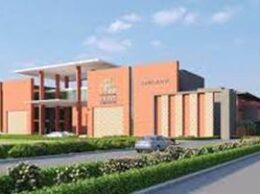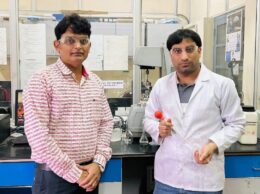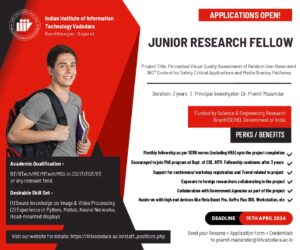Roorkee , 22nd December 2018: Indian Institute of Technology Roorkee, Department of Earthquake Engineering and The Indian Society of Earthquake Technology (ISET) held the16th Symposium on Earthquake Engineeringfrom December 20-22, 2018to discuss and evaluate the current earthquake resistant design practices and suggest enhancement/modifications to various agencies in the country for implementation. The symposium aims to evolve key guidelines, for communication to various agencies. Itacted as a platform for researchers, professionals, planners and policy makers associated with Earthquake Engineering to share views and exchange professional experience and recent technological advances in Earthquake Engineering and allied fields. The event, held once in four years, attracted a galaxy of internationally renowned experts presenting cutting-edge research and practical applications in the field of Earthquake Engineering.
Theevent focused on evolving appropriate strategies to enhance the knowledge on earthquake resistant construction for the end-users and draw an agenda for future course of action, in the wake of damaging scenarios due to the recent earthquakes faced by the country. The lack of proper design to cater to extreme events, poor quality of construction, inadequate administrative and legislative measures, problem of up-gradation of existing building stock, absence of appropriate mechanism for dissemination of technical know-how and awareness about earthquake resistant constructionwere some of the key issues discussed during the event.
The Chief Guest, Prof H Mutsuyoshi, Professor, Dept of Civil Engineering, Saitama University, Japan speaking on the occasion said, ” after the earthquake in Japan the seismic design codes were updated and these learnings are also important for India and the Department of Earthquake Engineering, IIT Roorkee is continuously working in that Direction”
Eminent scientist Dr Ross W Boulanger, Professor and Director, Center for Geotechnical Modeling University of California at Davis delivering the ISET Annual lecture he explained about the effects of liquefaction phenomenon in Cark Canal during Kocaeli earthquake 1999. He highlighted that in the North and North Eastern part of India liquefaction is of great concern since in most of these parts of India loose saturated soil exist which are highly susceptible to liquefaction. Due to this liquefaction phenonmenon, buildings and infrastructure facilities sink into soil mass.”
Explaining the significance of the event Dr ML Sharma, President, Indian Society of Earthquake Technology said, “The symposium is co-organised by Indian Society of Earthquake Technology since its inception. This is 16th in the series. This symposium is held in India in between the World Conferences being held by International Association of Eathquake Engineering, which ISET is founder member. The recommendations are sent as resolutions to Indian Government.”
The other dignitaries who participated in the event included: Prof A Boominathan, IIT Madras, Mr JK Bothara, Technical Director, Miyamoto International NZ Ltd, Prof Henry V Burton, Asst Professor, UCLA, USA, Prof, Sreekanta Das, University of Windsor, Canada, Prof SK Deb IITGuwahati, Prof Rajesh Dhakal, University of Canterbury, New Zeland, Dr N Gopalakrishnan, Director, CSIR-CBRI, Roorkee, Prof Amit Kanvinde, University of California, Davis, USA, Dr. Dominik Lang, Director, Natural Hazards Norwegian Geotechnical Institute, Prof Vincent W Lee, University of Southern California, Prof Bing Li, Associate Professor, NTU, Singapore, Prof Gopal SP Madabhushi,University of Cambridge, UK, Prof H Mutsuyoshi, Saitama University, Japan. Prof SK Nath,IIT, Kharagpur, Prof Taichiro Okazaki, Hokkaido University, Japan, Prof M Saitoh, Saitama University, Japan, Prof MP Singh,Virginia Tech, USA, Prof TG Sitharam, IISc, Bangalore, Prof IkuoTowhata,Tokyo University, Japan, Prof J H Yin,The Hong-Kong Polytechnic University, HK, Prof KL Wen,NCREE, Taiwan.
Some of the important topics discussed included: Experience Derived from Recent Earthquakes and Tsunamis, Special Materials, Structures and Systems, Codal Provisions on Earthquake Resistant Design, Seismic Vulnerability, Risk and Resilience Assessment, Seismic Safety of Industrial Structures and Thermal and Nuclear Power Stations, Seismic Safety of Bridges and Dams, Seismic Safety of Historical structures and Monuments, Seismic Safety of Offshore and Onshore Structures, including Effects of Tsunami, Life Line and Urban Systems, Human Response and Socio-Economic issues, Post-earthquake Rehabilitation, Earthquake Engineering Education, Public Awareness, Participation and Enforcement of Building Safety Laws, Earthquake Prediction and Early warning System.









